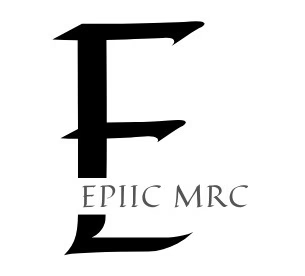Market Outlook
The global electrocardiogram (ECG) market is poised for substantial growth, driven by the rising prevalence of cardiovascular diseases and technological advancements. Valued at approximately $6.7 billion in 2024, the market is projected to expand to $22.6 billion by 2032, reflecting a CAGR of 3.4% from 2025 to 2032. Key market trends include the increasing adoption of portable and wireless ECG devices, enabling remote monitoring and enhancing patient convenience. The integration of AI is improving diagnostic accuracy, boosting market penetration. Additionally, the shift towards preventive healthcare and telemedicine is fueling demand for home-based ECG solutions, especially among aging populations. However, high costs and a shortage of trained professionals may restrain market expansion. Emerging markets present opportunities due to improving healthcare infrastructure and growing awareness of cardiovascular health. With a focus on early diagnosis and continuous monitoring, the ECG industry is set for steady growth and innovation in the coming years.
Drivers
Increasing Prevalence of Cardiovascular Diseases
Cardiovascular diseases (CVDs) remain a major public health concern, with rising prevalence and mortality rates worldwide. In 2023, heart disease accounted for 25% of deaths in the U.S., while global projections indicate a 90% increase in CVD cases by 2050, driven by aging populations and lifestyle factors. In India, CVDs cause nearly one-third of all deaths, with a 7.5% prevalence among older adults. Major risk factors high blood pressure, bad diet, and high cholesterol warrant the establishment of preventive healthcare strategies. The growing burden of CVD has increased the awareness of early detection and constant monitoring, which ensures that ECG is fast becoming a preferred device for timely diagnosis. With CVD-related deaths projected to increase sharply, proactive management of heart health is the need for the hour for diagnosed patients as well as those in preventive care. Thus, the demand for advanced diagnostic tools will remain high, thereby once more reinstating the relevance of ECG technology in cardiovascular health management..
Technological Advancements in ECG Devices
The modern ECG technology now-a-days comes with pretty good real-time monitoring, mobility, and diagnostic accuracy. It very much allows patients with decentralized telemetric monitoring availability to move around freely while their heart activity is being recorded continuously. The automated classification of ECG signals has benefits for diagnostic accuracy, which minimizes the potential for misdiagnosis and provides the ability to analyze signals remotely, without necessarily requiring the presence of a physician.Wearable ECG monitors, with applications in sports medicine and continuous patient monitoring, are experiencing rapid growth, projected at a 22% CAGR (2024-2028). Advanced algorithms power digital and handheld ECG devices for an efficient analysis of heart signals. These innovations combined with mobile applications give power to users to observe heart health anytime and anywhere, diminishing anxiety and augmenting preventive care. Nowadays, ECG systems fit effortlessly into day-to-day life, giving accurate heart monitoring access even beyond clinical settings. With ongoing advancement in AI and machine learning, these improvements continue to empower early detection and patient-centered healthcare, thus enabling heart health management to be more proactive and reliable.
Growing Demand for Home-Based Monitoring Solutions
With secure transfer of data, remote ECG interpretation services enable easy consultation with a cardiologist. Companies such as Tricog Health provide digital ECG devices that enable remote expert analysis, thus ensuring diagnoses that are faster and more accurate. This new trend is in line with the popularity of these home ECG monitoring devices, especially among older individuals who would prefer to independently monitor their heart health. Non-invasive and easy-to-use devices eliminate frequent visits to the hospital, thereby reducing stress and increasing convenience. Families benefit from continuous monitoring, which gives them peace of mind and ensures the early detection of potential heart issues. Preventive care is really taking off, and while home ECG monitoring does empower proactive heart health measures, it also allows personal owners to monitor their pockets. These innovations do not just ensure accurate diagnoses; they also usher in the transformation of healthcare: heart monitoring made accessible, efficient, and almost stress-free.
Restraint 1: High Costs of Advanced ECG Devices
The high cost of advanced ECG devices poses a significant challenge, especially for smaller healthcare facilities and clinics in underserved regions. Devices like WearLinq’s 6-lead ECG, which secured $6.7 million in funding, and premium models like the Shimmer3 ECG Unit (priced over $1,500) highlight the substantial financial investment required for cutting-edge cardiac monitoring. However, beyond acquisition, maintenance, calibration, and software updates further strain budgets, making these technologies inaccessible to many facilities. This cost barrier creates disparities in access to life-saving diagnostics, where financial capability, rather than medical need, dictates availability. While innovation may eventually reduce costs, many healthcare providers must currently compromise on advanced tools, impacting the quality of cardiac care and diagnostics.
Opportunities in the ECG Market
Expansion into Emerging Markets
The Asia-Pacific region is experiencing rapid growth in the ECG monitoring equipment market, driven by rising healthcare investments, improved infrastructure, and greater awareness of cardiovascular health. Economic prosperity and higher incomes have enhanced access to advanced medical technologies, increasing demand for ECG devices. In June 2024, AliveCor launched its FDA-cleared Kardia 12L ECG System, a handheld 12-lead device designed for professional use, helping regions with limited healthcare infrastructure make quicker critical decisions.
Due to the development or investment by emerging markets in public health and diagnostic technologies, the advancement of advanced portable ECG devices will be in great demand. Government initiatives and healthcare reforms are bringing preventive diagnostic facilities using ECGs into primary care. New hospitals in the early detection and management of cardiovascular diseases add to the capacity through which ECG technology trails into poorer communities. While it opens up markets, it also makes genuine advances toward the accessibility of life-saving diagnostics around the world.
Integration with Telemedicine Solutions
DocGo has expanded its partnership with SHL Telemedicine, integrating the SmartHeart® 12-lead ECG device into its mobile healthcare units, initially in California. Heartnet India is leveraging portable ECG devices for telemedicine, allowing real-time ECG data sharing for personalized treatment plans. PMcardio, an AI-driven, CE-certified Class IIb medical device, enhances telemedicine workflows by improving ECG analysis in pharmacies and primary care settings.

This seamless integration of ECG devices with remote monitoring systems is revolutionizing cardiovascular care. Patients can share real-time heart data with healthcare providers, enabling proactive care and timely interventions. For ECG manufacturers, this presents an opportunity beyond business—it ensures continuous patient monitoring and enhances healthcare accessibility. By bridging geographical and logistical gaps, telemedicine makes heart health management more personal, efficient, and life-saving, reinforcing the growing role of technology in transforming healthcare.
The electrocardiograph (ECG) market is witnessing significant growth, with portable ECG systems holding a dominant market share of 58.9% in 2024. The rising demand for portable diagnostic solutions in both clinical and home healthcare settings is driving adoption, as these devices offer ease of use, accurate arrhythmia detection, advanced data analysis, and seamless network connectivity.
Looking ahead, the wireless ECG segment is expected to be the fastest-growing category from 2024 to 2029, fueled by declining technology costs, advancements in remote monitoring, and increased integration of Bluetooth-enabled sensors and mobile apps. The ability to transmit real-time ECG data to smartphones and healthcare providers, combined with AI-powered analytics, is enhancing diagnostic accuracy and patient outcomes.
As per industry trends and market forecasts, the ECG sector is set for continued expansion, driven by technological innovations and the growing focus on preventive healthcare. The integration of mobile ECG solutions with digital health platforms is reshaping the market, making continuous cardiac monitoring more accessible and efficient.
Competitive Landscape
Medtronic
Philips
Siemens
ESAOTE
BTL
Schiller
GE Healthcare
Nihon Kohden Corporation
BPL Medical Technologies
RMS
Monarch Meditech
Contec Medical Systems
Edan Instruments
Datascope
BioCare
Recent Developments
- Fourth Frontier has developed the Frontier X Plus ECG wearable, which uses advanced algorithms to detect and classify cardiac rhythms. The wireless, adhesive-free device allows patients to monitor their heart rhythms in less than one minute. Clinical trials show it performs similarly to traditional 12-lead ECGs, with a sensitivity of 98.10% and specificity of 97.88% for atrial fibrillation detection.
- The OnePlus Watch 3 is set to be unveiled in Q1 2025, featuring a functional crown, ECG support, and Wear OS 5. It builds on the success of the OnePlus Watch 2, offering a full-fledged smartwatch with excellent battery life. The design remains unchanged, with a rotating digital crown, improved heart rate sensor, ECG support, and possibly LTE support. The OnePlus 13 series is set to launch on January 7.
Market Segmentation
By Product Type
- Resting ECG Devices
- Stress ECG Devices
- Holter Monitors
- Event Recorders
- Mobile Cardiac Telemetry Devices
- Smart ECG Devices
By Technology
- Portable ECG Systems
- Wireless ECG Systems
By Lead Type
- Single Lead ECG
- 3-Lead ECG
- 6-Lead ECG
- 12-Lead ECG
By End User
- Hospitals
- Ambulatory Surgical Centers (ASCs)
- Clinics
- Home Healthcare
FAQ
What is driving the growth of the global ECG market?
The rising prevalence of cardiovascular diseases, technological advancements, and increasing adoption of home-based and AI-powered ECG devices.
How big is the ECG market, and what is its growth projection?
The market is valued at $6.7 billion in 2024 and is projected to reach $22.6 billion by 2032, growing at a CAGR of 3.4%.
What role does AI play in ECG technology?
AI enhances ECG accuracy, reduces misdiagnosis, and enables remote interpretation, making diagnostics more efficient.
Why is there a growing demand for home-based ECG monitoring?
It allows continuous heart monitoring, early detection, and reduces the need for frequent hospital visits, especially for older adults.
What are the key restraints affecting ECG market growth?
High costs of advanced ECG devices and a shortage of trained professionals limit accessibility, particularly in underserved regions.
How are portable and wireless ECG devices shaping the market?
They enable real-time monitoring, seamless data sharing, and better patient convenience, driving widespread adoption.
How does telemedicine integration benefit ECG diagnostics?
It enables real-time ECG data sharing, improving patient-provider communication and ensuring timely interventions.
What opportunities exist in emerging markets for ECG devices?
Growing healthcare infrastructure, rising cardiovascular awareness, and government initiatives are fueling demand for ECG solutions.
Which segment dominates the ECG market?
Portable ECG systems lead, accounting for 58.9% of the market in 2024, driven by their ease of use and accuracy.
What is the future of ECG technology?
Advancements in AI, wireless connectivity, and telemedicine integration will enhance accessibility, accuracy, and patient outcomes.

